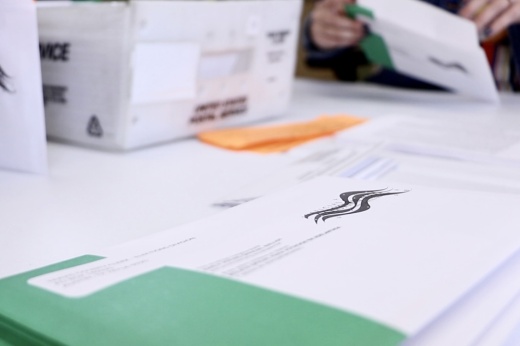Some of the changes stem from issues related to Senate Bill 1, an omnibus voting measure from a summer 2021 special legislative session that altered requirements to vote by mail.
The overview
“In 2022, tens of thousands of mail-in ballots [were] rejected for no fault of the voter,” said Katya Ehresman, the voting rights program manager for Common Cause Texas, a nonpartisan government watchdog organization.
Ehresman said many Texans were unaware of new information they needed to provide following the 2021 special session.
The Texas secretary of state previously reported that over 24,000 mail-in ballots were rejected during the March 2022 primary election.
Also in 2021, the secretary of state created an online tracking portal for voters’ ballots and applications to vote by mail. This year's legislation is expected to make it easier for voters to access the tracker and correct errors to their applications and ballots.
Breaking down the bills
House Bill 357, which became law Sept. 1, lessens the information required to track a ballot or application.
During past elections, voters logging into the portal had to provide their name, date of birth, the last four digits of their Social Security number, a state ID number and their exact voter registration address. Mistyping an address, entering an old apartment number or other common mistakes could prevent voters from accessing the portal.
Under the new law, a voter registration address is no longer required to use the tracker.
SB 1599 is aimed at giving election workers more time to review mail-in ballots and ensuring voters can correct mistakes on their applications or ballots. The measure also became law Sept. 1, which is the traditional effective date for bills passed during a regular legislative session.
When an election worker identifies an issue with an application or ballot, the county must contact the voter within two days and inform them of their options to fix the error, the law states. This will help guarantee that “the voters that are eligible, are registered and already made the good faith attempt to cast their ballot can ensure [their] vote is counted,” Ehresman said.
SB 1599 also allows counties to begin checking mailed ballots as soon as they receive them, no later than nine days before election day.
Both bills received bipartisan support during the legislative session.
SB 477, which became law June 18, expands the accommodations counties must provide for voters with disabilities.
Election officials must let voters with disabilities skip the line to cast their ballots, and signs explaining this rule will be posted at every entrance to the polling place, the law states.
Additionally, each polling place must have at least one parking spot designated for voters unable to enter the building. A sign with “large font that is clearly readable from a vehicle” must list a phone number for voters to call or text for curbside voting. Alternatively, officials can install a button or intercom that voters can use to get help.
Information about accessibility procedures and an application form to vote by mail must be clearly posted on each county clerk’s website.
“This is one of the best laws we’ve seen in a Southern state [during] this legislative cycle,” Ehresman said. “It largely improves access for voters with disabilities, who have been asking for this reform for years.”
Who can vote by mail?
According to the secretary of state’s office, Texans are eligible to vote by mail if they:
- Are at least 65 years old
- Are sick or disabled
- Are expecting to give birth within three weeks before or after election day
- Will be out of the country during in-person early voting and election day
- Are in jail but otherwise eligible to vote
- Are a civilly committed sexually violent predator, as defined by the Texas Health and Safety Code
- Oct. 10: last day to register to vote in the Nov. 7 general election
- Oct. 27: last day to apply to vote by mail
- Oct. 23: Early in-person voting begins.
- Nov. 3: Early in-person voting ends.
- Nov. 7: Election Day





